Garmin fēnix 7X Sapphire Solar Edition in review
When Garmin’s development team asked their managers what features they wanted to pack into the new fēnix 7X multisport watch, they probably just got a huge list of boxes to tick. Offering a humongous range of functions, the fēnix 7X Sapphire Solar is one of the most versatile watches currently available on the market. But is it also a good choice for cyclists or are the countless functions confusing?
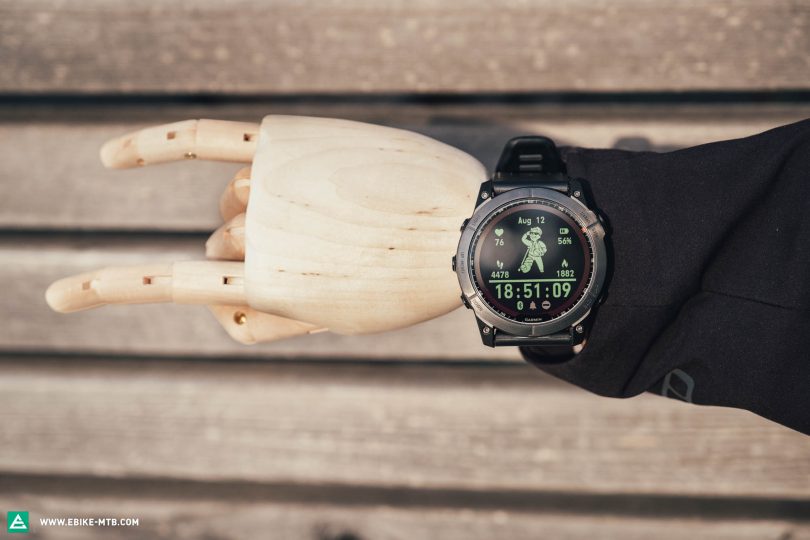
Garmin decided to go big with the fēnix 7X Sapphire Solar Edition – literally! It’s big both in terms of its range of function and the size of the housing, which measures just over 50 mm across and is 15 mm thick. With a silicone strap, the watch weighs just under 90 grams. The weight and size are noticeable in everyday life scenarios and during sport activities, where the watch pulls on your arm while jogging and the bulky watch housing gets easily caught on random objects. Luckily, Garmin had the foresight to provide the Sapphire Solar Edition with a robust titanium bezel and, safely tucked away underneath it, a scratch-resistant sapphire lens that withstands all sorts of nasty impacts. The case consists of a fibre-reinforced polymer housing with a metal base with integrated pulse/oxygen saturation sensor and a charging port.
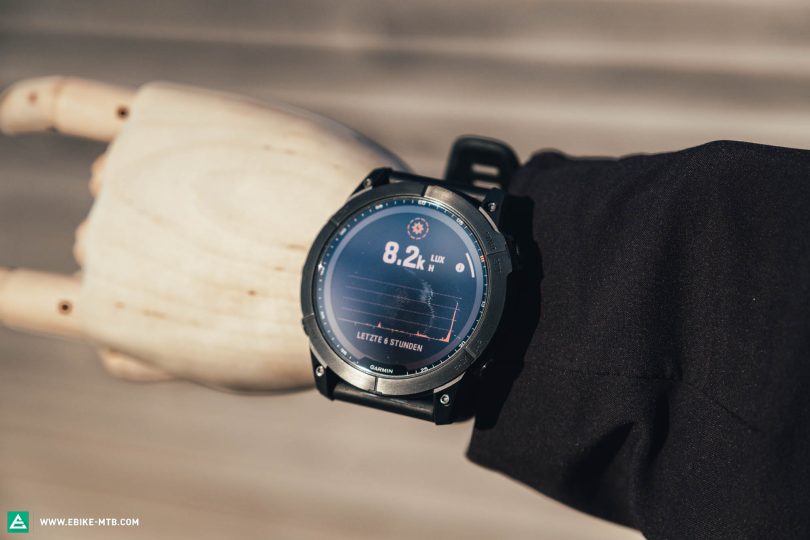
If the 7X is too bulky for your taste, you should take a closer look at the smaller fēnix 7 or the fēnix 7S, which is the smallest version in the fēnix 7 range. However, the sleeker fēnix 7 models renounce two of the killer features of their bulky 7X counterpart. First off, the practical LED light, which can be used either as a flashlight or a red/white safety light for late night jogs, which even synchronises with your running cadence! The second feature is the mind-boggling battery runtime, which an Apple Watch or most eMTBs can only dream of. Depending on the setting and use, this can be anything between one day and several months. Using a sensible setting of medium display brightness, continuous pulse meter, stress and sleep phase functions, permanent smartphone connection and almost 25 hours of GPS tracking, the battery of our 7X test watch lasted a whole week – a more than respectable performance. In expedition mode, the battery only drops by a few percentage points per day while the watch still collects GPS data at predefined time intervals. The battery is supported by a solar charging lense and a narrow yet more efficient solar charging ring around the watch face. Depending on the sunlight, this extends battery runtime significantly, up to 50% in this test! If you aren’t too concerned about size and want even more battery life, you should take a closer look at the Garmin Enduro 2 watch, which was launched only recently. This is just under 1 mm thicker than the fēnix but has an even brighter LED light and around 25% more battery life – and the range of functions is almost identical!
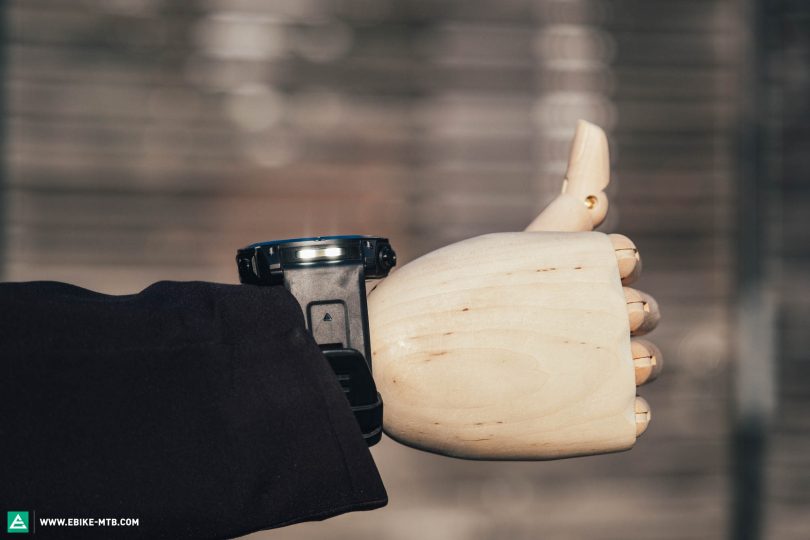
Functionality: that’s where the fēnix 7X Sapphire Solar really shines. In everyday life, it forwards phone calls and message notifications straight to your wrist and even lets you send predefined short answers, thus allowing you to leave your smartphone in your pocket or backpack. And if you lost your phone, you can get it to ring and track it using your fēnix 7X watch. The Garmin Connect app enables even more services: for example, you can synchronise your fēnix with a web calendar and get notified about upcoming events. Music anyone? Using Bluetooth headphones, you can do this without connecting to a smartphone. When paying via NFC, the fēnix 7X makes you feel a bit like a mini James Bond, the only difference being that with your Garmin watch you’ll be buying beer cans from your local petrol station rather than a bottle of bubbly at the poker table in Monte Carlo. Garmin did a great job with the function control. Although the fēnix 7X has more menu items than a Chinese takeaway that serves pizza, it doesn’t take long to figure out where to find everything. Most functions can be called up and controlled via the 5 buttons on the outer edges of the watch face. In addition, you can assign shortcuts for frequently used functions to individual keys.
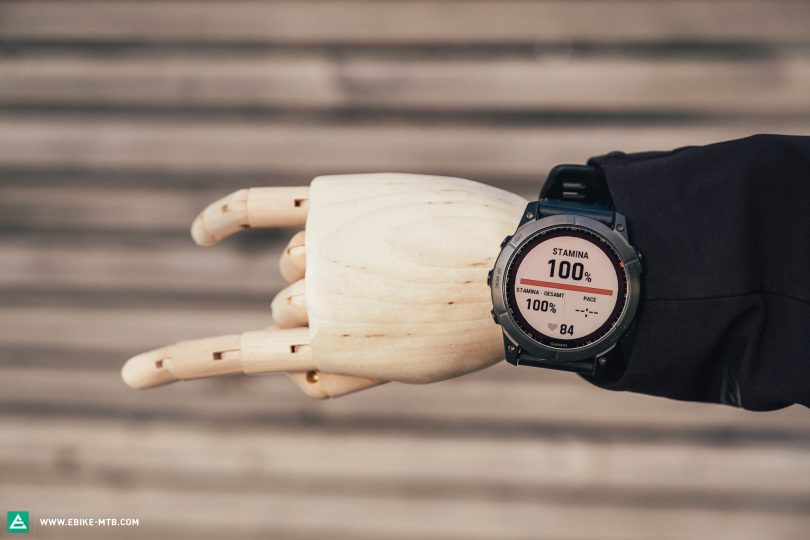
The fēnix 7X can also be operated via the 1.4″ touchscreen. This makes sense especially if you use your Garmin for navigation and set a destination point on the map from the watch itself. While the easiest way is to send a route from your smartphone to the watch, the fēnix 7X can be used as a completely separate navigation system too, offering plenty of storage with its 32 GB capacity and leaving almost 28 GB for maps once you’ve subtracted 4 GB of the operating system. However, you won’t be able to squeeze the entire world onto your wrist. The Europe map alone uses 11.5 GB and is detailed enough to show even narrow trails. However, with a rather mediocre resolution of 280 pixels (diagonal), you have to zoom in deep into the map for small details. Even the transflective memory-in-pixel (MIP) display with only 64 bit of colour can’t keep up with the high-quality AMOLED colour displays you get with the Apple Watch or Garmin epix. That being said, the fēnix 7X display relies on ambient light, ensuring decent readability in direct sunlight while at the same time using very little power for backlighting.
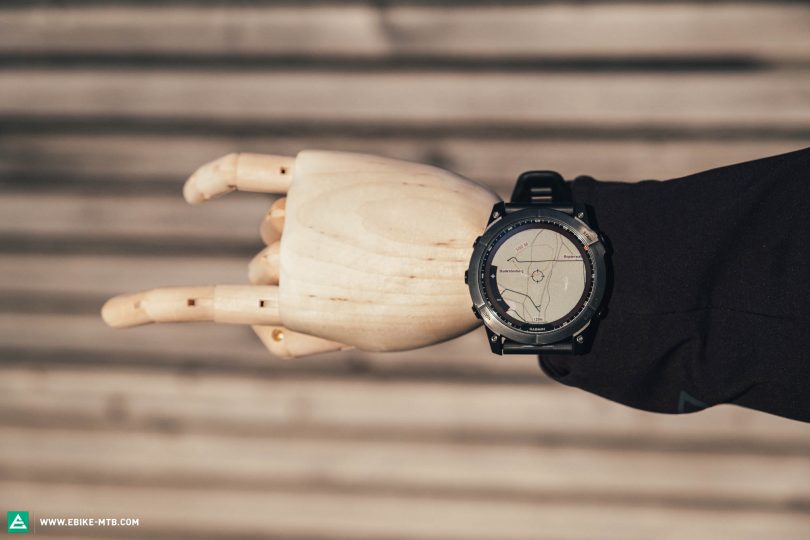
Alongside the navigation function, the fēnix 7X offers several features that make it interesting for cyclists. For example, it can connect to many ebikes via ANT+ and show crucial riding data such as the battery charge on its display. The MTB Dynamics data fields measure and display your Grit and Flow scores. At Garmin, the former is a measure of the overall difficulty of a mountain bike ride while the latter tells you how well you maintain speed and how smoothly you ride. If you wear the fēnix 7X regularly during training, the watch will automatically create a fitness profile for you. The Stamina function shows you how much energy you've already used and how far (or long) you can keep going at the current pace before you collapse on the floor. The range of functions is growing each day, not only through regular Garmin updates, but also through user-generated apps in the Garmin Connect IQ store. As a result, we were confronted with an overwhelming amount of functions at the beginning of this test, but after a few weeks we found a setting that perfectly suits our habits, both in everyday life and our time off.
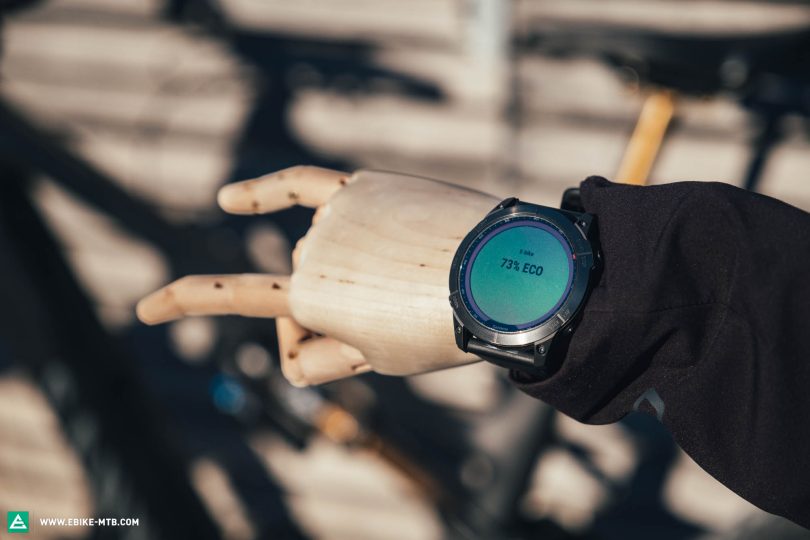
Although Garmin is charging almost € 1,000 for the fēnix 7X Sapphire Solar Edition, the price is more than justified given the impressive battery autonomy, excellent build quality and huge range of functions. While even the most tech-savvy sports enthusiast will only use a fraction of its functions, the fēnix 7X Sapphire Solar Edition has you covered with all the basics. As an everyday smartwatch, it delivers a solid performance but also feels awkwardly bulky on your wrist.
Tops
- insane battery autonomy
- practical flashlight
- humongous range of functions
- super versatile
Flops
- display can appear dark
- too big for small wrists
Did you enjoy this article? If so, we would be stoked if you decide to support us with a monthly contribution. By becoming a supporter of E-MOUNTAINBIKE, you will help secure a sustainable future for high-quality cycling journalism. Click here to learn more.
Words: Rudolf Fischer Photos: Mike Hunger








